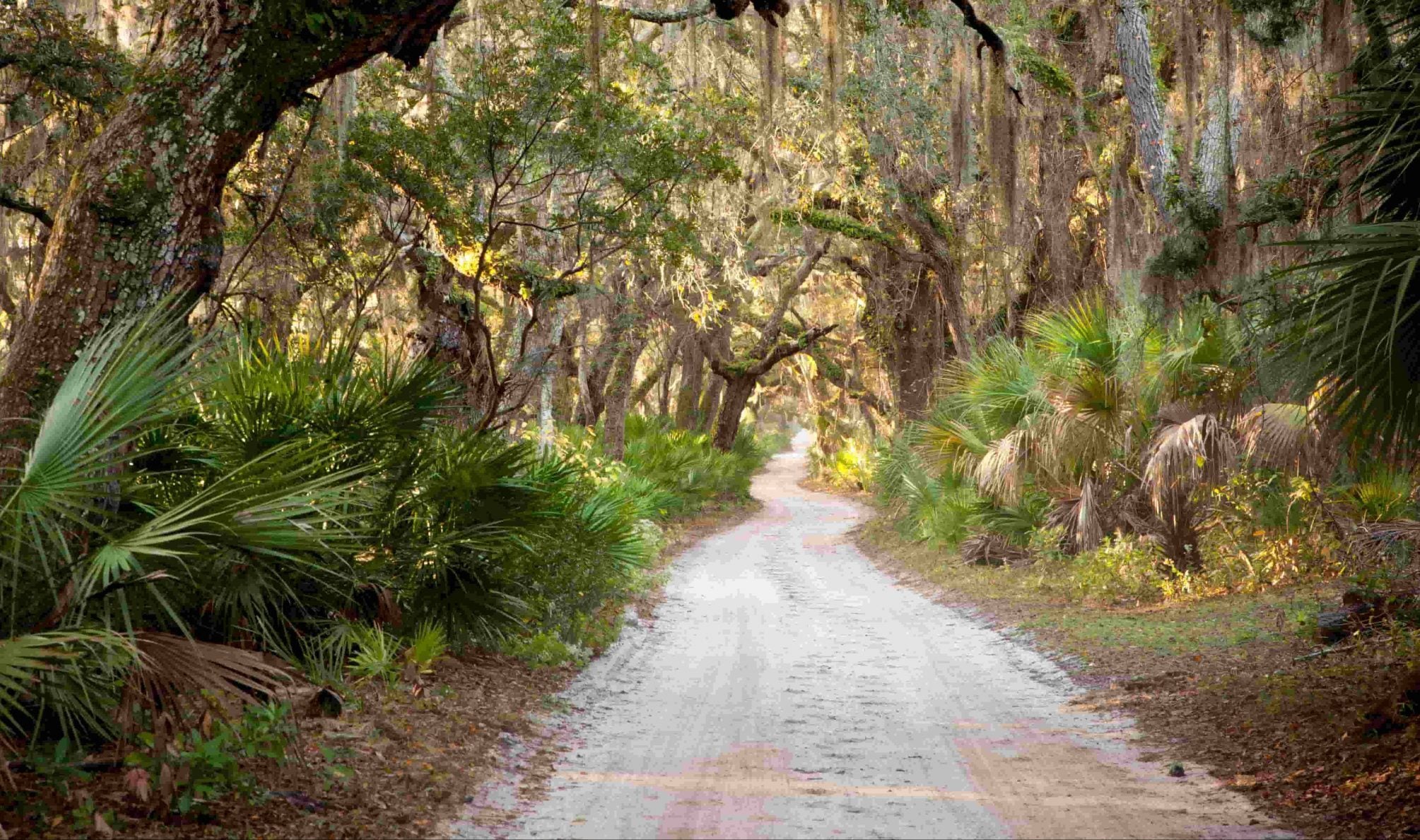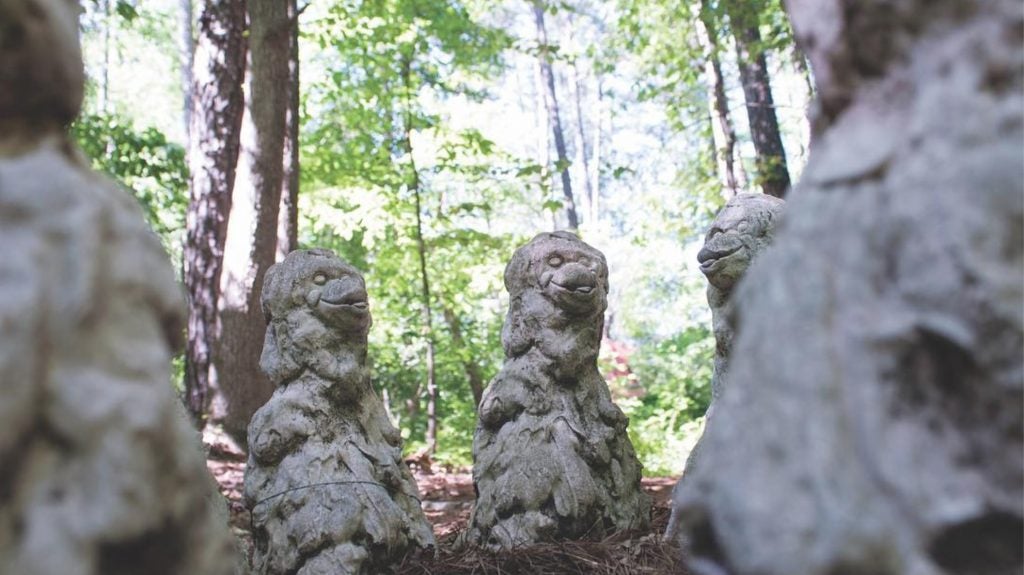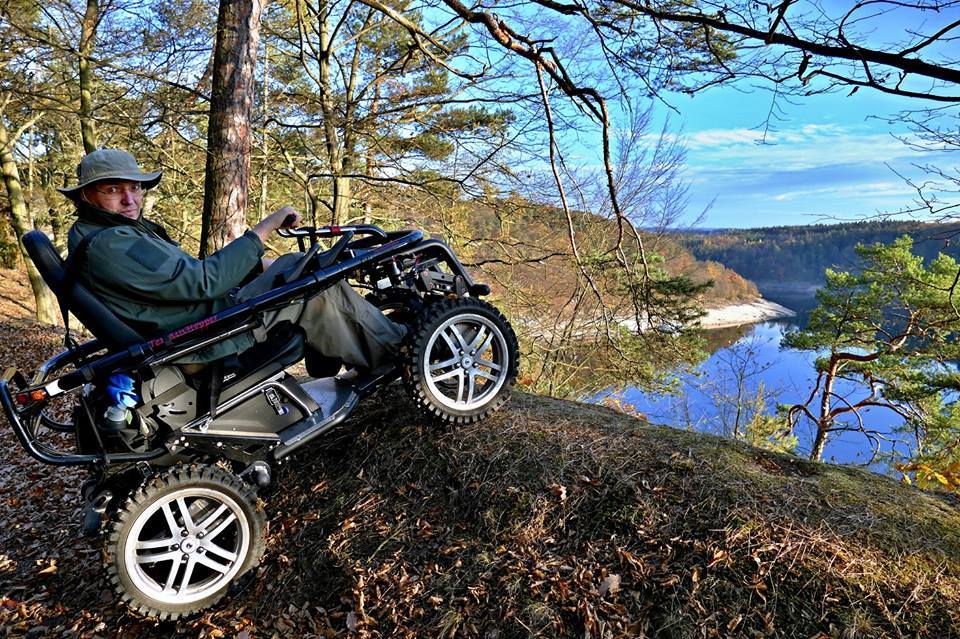Beaches rarely come to mind when people think of Georgia terrain. That could be because Georgia’s 100 miles of coastline offer much more than traditional sandy banks. In a day’s drive, you can travel along the Georgia coast and witness the full breadth of the state’s habitats, from barrier islands to salt marshes to cypress swamps.
Sites where coastal Georgia land meet the Atlantic can be dangerous due to dramatic king tides, which are high tides that evolve into extensive flooding by the pull of a full moon. For this reason, it’s safest to camp along an offset of the coast like an estuary, river, or swamp. Seaside camping sites are also available but keep an eye out for flood advisories.
Transforming Tides
Though humble in size, the Georgia coast is an ecological haven for a staggering number of plants and animals that it has been recognized as one of the most vital U.S. shorelines along the Atlantic Ocean. But it’s also in a state of constant change. Pollution, invasive species, and climate change threaten the survival of the habitats and the species that call it home, making it more important than ever to conserve the beauty and ecological necessity of Georgia’s coast.
7 Georgia Coast Campgrounds The Dyrt Campers Love
Stop and enjoy some of Georgia’s most biologically diverse environments at these community-favorite campgrounds.
1. Crooked River State Park near St. Mary’s, GA

Image from The Dyrt camper Sarah C.
Crooked River State Park is located on St. Mary’s Island at the southern bookend of the Georgia coast. Live oaks veiled in Spanish moss edge the still salt marshes and lend to the mystique of the environment. But make no mistake, the habitat is teeming with life. From sea to sky, diverse wildlife like fiddler crabs, gators, herons, and even bald eagles make their home here or migrate through. When reserving your stay, you can choose from 64 tent, trailer, and RV campsites, as well as 11 cottages.
“The campground is huge and has everything you need. Easy to get in and out of with a camper or a tent. The river is Swift and fun for boating. Fishing is great and the trails are nice and pretty.” — The Dyrt camper Holly B.
Camp Here2. Yankee Paradise in Cumberland Island National Seashore, GA
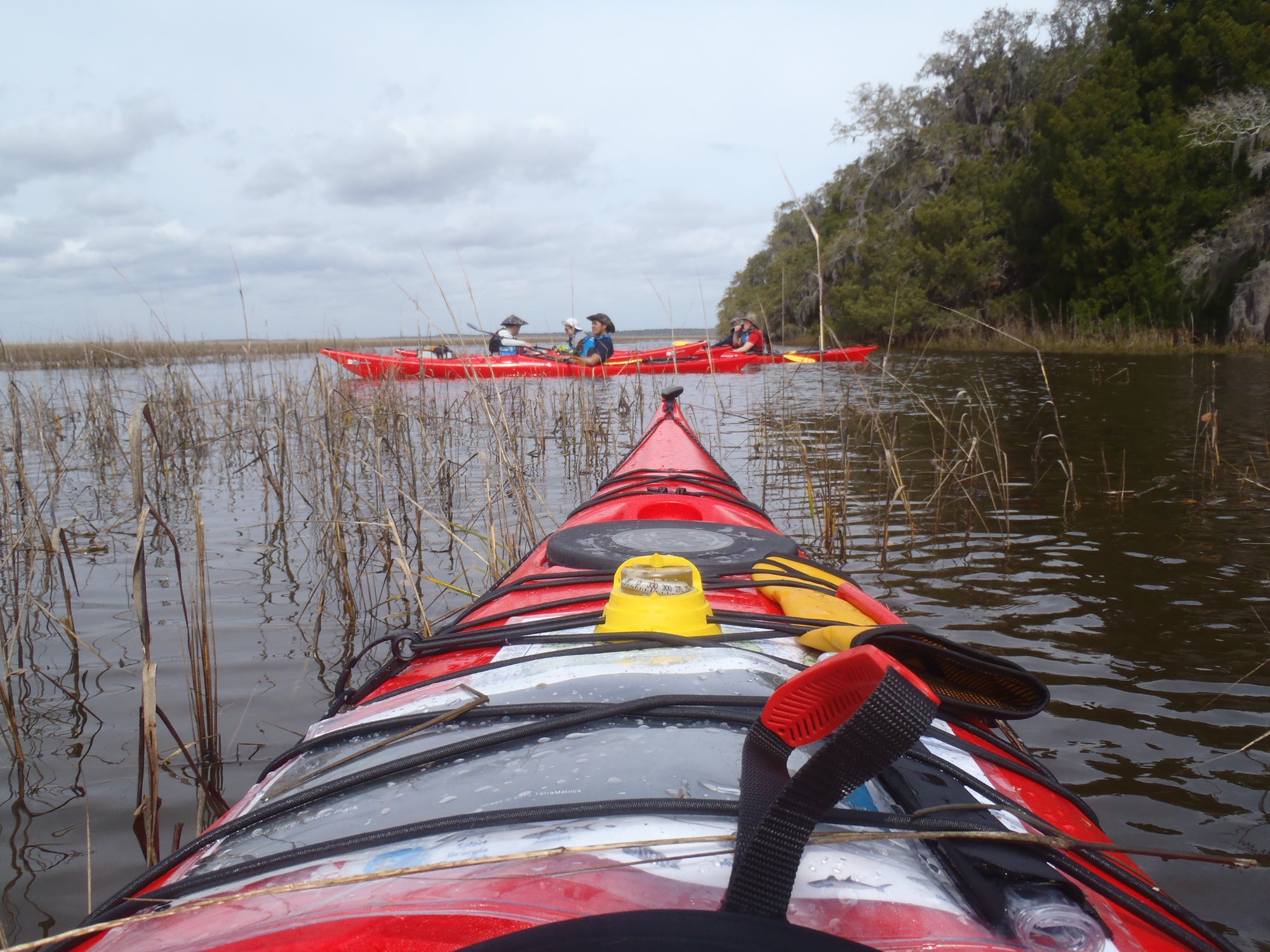
Image from The Dyrt camper Sarah C.
Yankee Paradise is part of Cumberland Island’s Wilderness Campgrounds, so it’s perfect for a true immersion with the environment. Wild horses, armadillos, and a century-old mansion make Yankee Paradise a one-of-a-kind excursion. Campers should only endeavor to Yankee Paradise after careful planning and preparation. The campsite does not have potable water, does not allow for fire rings, and there are no designated camping spots. Be prepared with all food, water, storage, and to catch a ferry to and from the island.
“The site itself is great. It’s wooded and the ground is a dirt/sand combo which is nicer than all sand. The campsite is also a short walk to the ocean side of the island.” — The Dyrt camper Sarah C.
Camp Here3. Skidaway Island State Park near Savannah, GA

Image from The Dyrt camper Ronnie K.
On Skidaway Island State Park, you can camp beneath the shade of hanging Spanish moss and discover the part of the Georgia coast that cradles “the ocean’s nursery.” The park borders Skidaway Narrows, a portion of the 3,000-mile Atlantic Intracoastal Waterway.
The Avian Loop Trail provides views of the tides rushing into the salt marshes every six hours, creating Georgia’s most productive ecologies. Campers can choose from 87 tent, RV, and trailer campsites, many of which have electric hookups. The plots are fairly large without sacrificing privacy. Six miles of trails allow campers to wander through forest, salt flats, and a variety of brackish waters.
“My favorite campground…nestled in a maritime forest, the live oaks and Spanish moss, drip and dance around you, lending an air of romance and other- worldly feel…This campground is well organized and the staff are proficient at their job. The coast of Georgia is a must to explore by boat. Wild islands and beautiful rivers abound.” — The Dyrt camper Charlotte A.
Camp Here4. Okefenokee Swamp in Southern Georgia
View this post on Instagram
At the Okefenokee Swamp you can voyage back to an ancient time in your canoe or kayak. Nicknamed “The Land of Trembling Earth” for its unstable peat floor, Okefenokee is the largest blackwater swamp in North America. While the swamp is inland today, it was once a coastal body. Its ancient origin comes from an Atlantic terrace from a Pleistocene estuary.
The Georgia National Wildlife Refuge allows for campers with an overnight camping permit to navigate the gator-ridden swamp via a motorless boat and set up camp in designated areas. Reservations must be made in advance. Full planning and preparation are necessary for this trip, so be sure to map your course according to locations where fires are permitted, and check for restrooms.
Camp Here5. River’s End in Tybee Island, GA
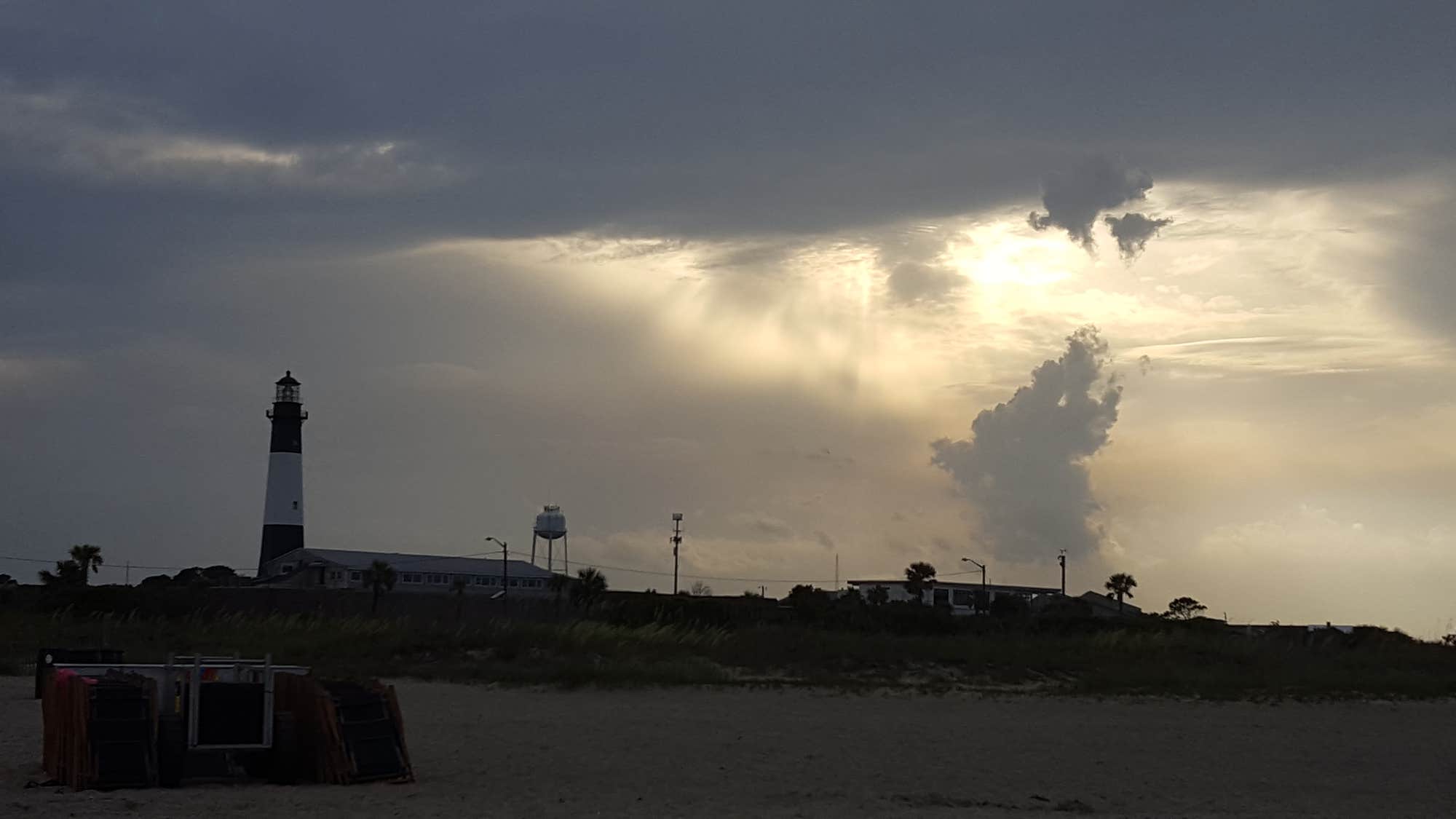
Image by The Dyrt camper Melissa K.
River’s End offers a family-oriented retreat into nature that’s only a stone’s throw from the Tybee Island beach, also known as “Savannah’s beach.” If you find yourself on Tybee Island, then you’ve ventured to the easternmost point in Georgia. Camping on Tybee means that everything the small island has to offer is within close proximity, from the famed Tybee Lighthouse to the dolphin tours. The campsite also offers access to Tybee Island’s largest swimming pool and has primitive, tent, and RV camp plots, as well as cabins available for reservation.
We met some of the friendliest people there as well. There was also a local seafood stand where we got fresh shrimp and other fish. It was well worth the venture out. We had a fire pit, picnic table and a grill. We would definitely go back. — The Dyrt camper Melissa K.
Camp Here6. Altamaha Regional Park in Brunswick, GA
View this post on Instagram
Camping at the Altamaha Regional Park in Glynn County means waking up on the banks of the coastal Altamaha River. Known as “The Amazon of the South,” the Altamaha is a 137-mile blackwater river that contributes to the Altamaha sound, the largest intact estuary on the Atlantic coast.
At Altamaha Regional Park, kids and adults can dip into the Altamaha River in the designated swimming areas, rent boats from the campsite for an expedition in the monumental body of water, or fish for largemouth bass from the piers. Campsites include tent, full hook-up, and a riverside option, as well as handicap-accessible cabins.
Camp Here7. Cabretta Pioneer Campground on Sapelo Island, GA
View this post on Instagram
Sapelo Island is one of Georgia’s many barrier islands which act as the geographical first line of defense, protecting inland Georgia from winds and tides. While some of the more popular islands like Tybee have a near constant stream of visitors, Sapelo Island is one of the more discreet and difficult islands to plan a camping trip on. In fact, it’s illegal to travel to the island without a permit.
The island is only accessible by ferry or aircraft, but long before you’re crossing the waters, you’ll need to secure your reservation. The Cabretta Campground only accommodates groups of 15–25 people. Sapelo Island is the home to the last Gullah community, known as Hog Hammock. For the time being, the Cabretta Camp is closed due to severe damage from Hurricane Irma.
Camp HereRelated Campgrounds
- Shoal Creek Campground
- Creekfire RV Resort, Savannah, GA

